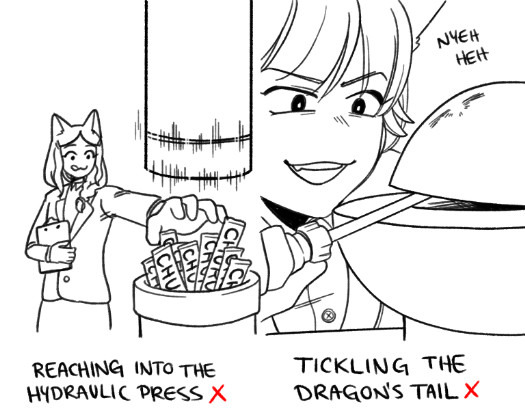Don't wanna be here? Send us removal request.
Text

Yinka Shonibare, Birdcage Kid (Boy), 2023, mixed materials (Museum of Art, Cleveland)
225 notes
·
View notes
Text
hi, a lot of you need a perspective reset
the average human lifespan globally is 70+ years
taking the threshold of adulthood as 18, you are likely to spend at least 52 years as a fully grown adult
at the age of 30 you have lived less than one quarter of your adult life (12/52 years)
'middle age' is typically considered to be between 45-65
it is extremely common to switch careers, start new relationships, emigrate, go to college for the first or second time, or make other life-changing decisions in middle age
it's wild that I even have to spell it out, but older adults (60+) still have social lives and hobbies and interests.
you can still date when you get old. you can still fuck. you can still learn new skills, be fashionable, be competitive. you can still gossip, you can still travel, you can still read. you can still transition. you can still come out.
young doesn't mean peaked. you're inexperienced in your 20s! you're still learning and practicing! you're developing social skills and muscle memory that will last decades!
there are a million things to do in the world, and they don't vanish overnight because an imaginary number gets too big
143K notes
·
View notes
Text
“How long will this last, this delicious feeling of being alive, of having penetrated the veil which hides beauty and the wonders of celestial vistas? It doesn’t matter, as there can be nothing but gratitude for even a glimpse of what exists for those who can become open to it.”
— Alexander Shulgin
61 notes
·
View notes
Text
In the cases you mention I do think there is a typical mistake: a sort of tacit assumption of functional monism. That is, assuming that terms of all kinds work roughly as terms like ‘tiger’ or ‘charged’ do, to track some sort of worldly feature, entity or property. (In Huw Price’s terms: to think of them on the model of e-representations.) That tendency comes, perhaps, with the ‘metaphysical’ frame of mind: thinking that the primary question is then to ask what these things or properties are that the terms refer to (what is truth, reference, existence?), and what their essence is. But what is overlooked is that this interpretation of the function of our terms is only one option, and an option we can’t just assume is the correct one, and that can lead us astray in terms of the kinds of questions we ask.
Amy Thomasson, AMA
2 notes
·
View notes
Photo

No ‘history of ideas’ takes place in isolation from the blood and sweat of general history.
70 notes
·
View notes
Text
we need a trinary version of “both." i want to call empasis to three things
176 notes
·
View notes
Text
Some Basic Combinatorics Via Not-So-Basic Topology
Proposition. Let P(r; n,k) be the number of partitions of an integer r into n non-negative integers less than or equal to k. Then P(r; n,k) = P(r; k,n).
This is very easy to see with Young diagrams (count columns vs rows). It's also very difficult to see with topology, but that's more fun. This is probably going to be a bit long, but I think the pay-off is worth it.
The standard construction of (real) projective space Pⁿ is to call it the space of 1-dimensional subspaces of Rⁿ⁺¹. This generalises pretty naturally to the "Grassmann manifold" Gr(n; n+k) of n-dimensional subspaces of Rⁿ⁺ᵏ, so Pⁿ = Gr(1; n+1). Hopefully you believe that Gr(n; n+k) is still a compact nk-manifold. If you want, it's also the quotient O(n+k)/O(n) x O(k).
As well as being a manifold, this is naturally a CW complex. Let's think about how. For each point in Gr(n; n+k) (that is, n-dimensional subspace), it has a unique orthonormal basis where the final non-zero coordinate of each basis vector is positive (easy linalg exercise). Taking this basis, we let d_1,...,d_n be the the "dimension" of the basis vectors (i.e. the position of their final non-zero coordinate, so that (-1,2,0) is 2-"dimensional"). We can assume these are strictly increasing by permuting them. Thus, to each point in Gr(n; n+k), we are associating a unique list of n increasing integers between 1 and n+k.
Let e(d_1,...,d_n) be the subset of Gr(n; n+k) which give those integers. This is actually an open disc of dimension Σ(d_i-i)! Why? To choose the first basis vector, we can pick any unit vector in the upper half-space of dimension d_1. That is, we have a choice in the hemisphere=disc of dimension d_1-1. To choose the ith, we have a choice in a hemisphere=disc of dimension d_i-1, but we have to be orthogonal to the i-1 vectors we have already chosen, giving a choice in a disc of dimension d_i-i. A product of discs is a disc, and we're done!
Checking that this is actually a CW decomposition is kinda tricky, but also unenlightening, it just is true. So let's count how many cells of each dimension it has. An r-cell corresponds to a choice of partition r = Σ(d_i-i), where 1 ≤ d_1 < ... < d_n ≤ n+k. Equivalently, it is a choice of partition r = Σe-i, with 0 ≤ e_1 ≤ ... ≤ e_n ≤ k, by setting e_i = d_i-i. So the number of r-cells is exactly P(r; n,k)!
We're getting close! The final observation is this. Choosing a n-dimensional subspace is equivalent to choosing its orthogonal complement. That is, the map V → V^⊥ is a natural diffeomorphism between Gr(n; n+k) and Gr(k; n+k), and also a CW-isomorphism. (True because everything is naturally defined; slightly tedious to check.) In particular, it has to match up the number of r-cells, so P(r; n,k) = P(r; k,n)! No Young diagrams necessary.
I think this is kinda neat. It's also weird because these Grassmann manifolds completely classify vector bundles on compact manifolds and are how you define characteristic classes, so secretly under all of that differential topology there's really hard partition problems going on.
35 notes
·
View notes
Text
“Everyone thinks of them in terms of poisoned apples and glass coffins, and forgets that they represent girls who walked into dark forests and remade them into their own reflections.”
— Seanan McGuire, Indexing
22 notes
·
View notes












